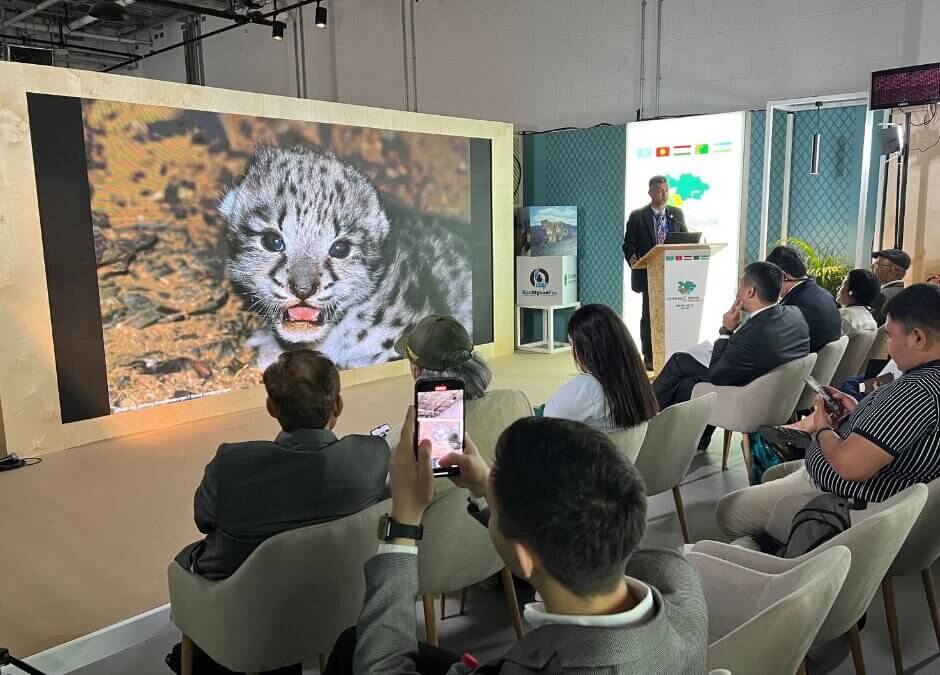AT the 28th Conference of the Parties to the United Nations Framework Convention on Climate Change (COP28), political and conservation leaders called upon international finance organizations to commit investments for safeguarding Asia’s mountain ecosystems, glaciers, and the iconic snow leopard.

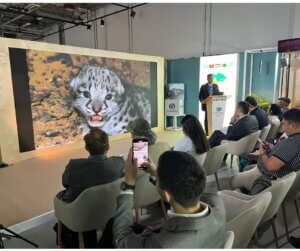
The high-level session opened with a message from Sadyr Zhaparov, the President of the Kyrgyz Republic, who urged collaborative efforts to preserve snow leopards and the shared heritage of Asia’s high mountains, also considered the Earth’s Third Pole. President Zhaparov underscored the Kyrgyz Republic’s pivotal role in uniting 12 countries of Asia under the Global Snow Leopard & Ecosystem Protection Program, which celebrates its tenth anniversary of collaborative and award-winning international conservation effort this year. President Zhaporov also stressed the critical role of glaciers in sustaining life and called for immediate collective action to combat climate change.
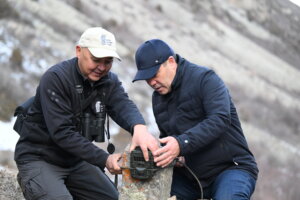
The Minister of Natural Resources, Ecology, and Technical Supervision of the Kyrgyz Republic, Melis Turgunbaev, delivered a welcome speech. He underscored that the vanishing glaciers and receding snow cover are not merely local issues, but rather constitute a global crisis. He advocated for the snow leopard, symbolizing adaptation to climate change at the Third Pole, as a testament to our dedication to preserving the region’s mountain ecosystems and the livelihoods of the inhabitants of these lands.

The session featured speeches by the Ministers of Natural Resources, Ecology, and Environment from the four snow leopard range countries: Mr. E.N. Nasynbaev (Republic of Kazakhstan), Mr. Maheshwar Dhakal (Director General, Ministry of Forests and Environment, Nepal), Mr. A.A. Abdukhakimov (Republic of Uzbekistan), and Mr. Asif Haider Shah (Secretary, Ministry of Climate Change and Environmental Coordination, Government of Pakistan).


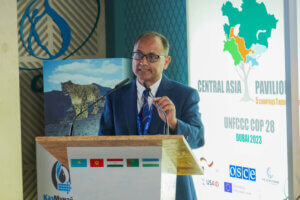
The ministers emphasized the importance of transboundary cooperation, the conservation leadership of local and indigenous communities, scientific research, and financial and technical support from international partners to ensure the long-term survival of the snow leopard and its habitat.
Executive Director of the International Snow Leopard Trust, Dr. Charu Mishra, emphasized the alarming rate of warming in the Third Pole, and the need for sustainable economies as well as urgent climate adaptation measures across the region. He appealed to political leaders to designate the snow leopard as the symbol of climate resilience, adaptation, and ethical nature conservation across the region.

Others addressing the gathering included Ms. Gabriela Blatter (Global Environment Facility), and Ms. Isabella Koziell (International Centre for Integrated Mountain Development.

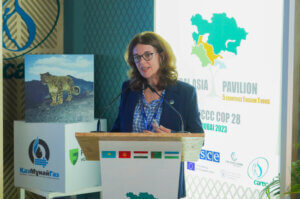
Dr.Koustubh Sharma, International Coordinator of the Global Snow Leopard and Ecosystem Protection Program (GSLEP), presented a paper titled “Snow Leopard – the Mascot of Climate Change Adaptation and Resilience at the Third Pole.”
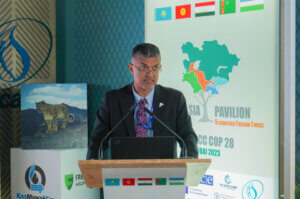
Moderator Keshav Varma, Senior Advisor to GSLEP Programme, drew the attention of international financial organizations such as the GEF, the Global Climate Fund, and the World Bank to this region and emphasized the need for urgent investments for conservation and climate adaptation in the Third Pole.
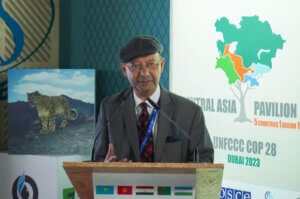
Post-meeting, the leaders of the snow leopard range countries and international partners issued a joint statement outlining key priorities for climate change resilience and snow leopard conservation. The leaders celebrated the 10th anniversary of the GSLEP program, marking a decade of joint initiatives aimed at conserving snow leopards and their habitats.



